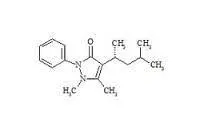- Afrikaans
- Albanian
- Amharic
- Arabic
- Armenian
- Azerbaijani
- Basque
- Belarusian
- Bengali
- Bosnian
- Bulgarian
- Catalan
- Cebuano
- Corsican
- Croatian
- Czech
- Danish
- Dutch
- English
- Esperanto
- Estonian
- Finnish
- French
- Frisian
- Galician
- Georgian
- German
- Greek
- Gujarati
- Haitian Creole
- hausa
- hawaiian
- Hebrew
- Hindi
- Miao
- Hungarian
- Icelandic
- igbo
- Indonesian
- irish
- Italian
- Japanese
- Javanese
- Kannada
- kazakh
- Khmer
- Rwandese
- Korean
- Kurdish
- Kyrgyz
- Lao
- Latin
- Latvian
- Lithuanian
- Luxembourgish
- Macedonian
- Malgashi
- Malay
- Malayalam
- Maltese
- Maori
- Marathi
- Mongolian
- Myanmar
- Nepali
- Norwegian
- Norwegian
- Occitan
- Pashto
- Persian
- Polish
- Portuguese
- Punjabi
- Romanian
- Russian
- Samoan
- Scottish Gaelic
- Serbian
- Sesotho
- Shona
- Sindhi
- Sinhala
- Slovak
- Slovenian
- Somali
- Spanish
- Sundanese
- Swahili
- Swedish
- Tagalog
- Tajik
- Tamil
- Tatar
- Telugu
- Thai
- Turkish
- Turkmen
- Ukrainian
- Urdu
- Uighur
- Uzbek
- Vietnamese
- Welsh
- Bantu
- Yiddish
- Yoruba
- Zulu
Nov . 24, 2024 12:05 Back to list
Oxytetracycline Injection 20 for Veterinary Use and Its Benefits in Animal Health
Oxytetracycline Injection 20 An Overview of Its Uses and Significance
Oxytetracycline is a broad-spectrum antibiotic belonging to the tetracycline class of antibiotics. It is renowned for its efficacy against a variety of bacterial infections, making it an essential drug in both human and veterinary medicine. One specific formulation, the Oxytetracycline Injection 20, refers to an injectable solution containing 20% oxytetracycline, primarily used for treating acute and chronic infections.
The primary mechanism of action of oxytetracycline involves the inhibition of bacterial protein synthesis. By binding to the 30S ribosomal subunit of bacteria, it interferes with the translation process essential for bacteria to grow and reproduce. This action makes it effective against a wide range of pathogens, including Gram-positive and Gram-negative bacteria, atypical bacteria, and some protozoa. Common infections treated with oxytetracycline injection include respiratory tract infections, urinary tract infections, and infections caused by Chlamydia and Mycoplasma species.
Oxytetracycline Injection 20 An Overview of Its Uses and Significance
Despite its effectiveness, the use of oxytetracycline is not without risks. One significant concern is the emergence of antibiotic resistance. The overuse and misuse of oxytetracycline, especially in agricultural settings, can lead to resistant bacterial strains that can compromise its efficacy. This escalating resistance poses challenges for healthcare providers, as it limits treatment options for common infections.
oxytetracycline injection 20

Moreover, patients receiving oxytetracycline injection may experience side effects. Common side effects include gastrointestinal disturbances, such as nausea and diarrhea, as well as allergic reactions in some individuals. In rare cases, prolonged use may lead to more severe reactions, such as liver toxicity or hypersensitivity. Therefore, healthcare providers must assess the patient’s medical history and current condition before prescribing this antibiotic.
Oxytetracycline injection is generally considered safe when used appropriately, but it is crucial to adhere to established guidelines. Dosing regimens vary depending on age, weight, and the type of infection being treated. A typical course may last from a few days to a couple of weeks, depending on the severity of the illness and the patient’s response to the treatment.
In addition to its immediate therapeutic benefits, oxytetracycline has a notable role in research and development. Scientists are investigating its potential applications beyond treating infections, including its effectiveness against certain cancers and its possible effects on inflammatory diseases. These studies underscore the importance of oxytetracycline in the broader scientific landscape and its potential to contribute to future medical breakthroughs.
In conclusion, Oxytetracycline Injection 20 stands out as a vital tool in the arsenal against bacterial infections in both human and veterinary medicine. Its versatility, coupled with its broad-spectrum activity, makes it an essential antibiotic for treating a variety of conditions. However, the challenges posed by antibiotic resistance and potential side effects necessitate careful consideration in its use. Continued research and responsible usage are key to maintaining the effectiveness of oxytetracycline and safeguarding public health in the age of increasing antibiotic resistance. Thus, both healthcare professionals and patients must remain vigilant in their approach to utilizing this antibiotic, ensuring it remains a reliable option for future generations.
-
Guide to Oxytetracycline Injection
NewsMar.27,2025
-
Guide to Colistin Sulphate
NewsMar.27,2025
-
Gentamicin Sulfate: Uses, Price, And Key Information
NewsMar.27,2025
-
Enrofloxacin Injection: Uses, Price, And Supplier Information
NewsMar.27,2025
-
Dexamethasone Sodium Phosphate Injection: Uses, Price, And Key Information
NewsMar.27,2025
-
Albendazole Tablet: Uses, Dosage, Cost, And Key Information
NewsMar.27,2025













